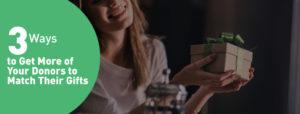How to Apply Job Interview Skills to Fundraising
My daughter-in-law is interviewing for a job. She asked me for some advice. Here is what I found myself telling her:
Don’t focus on your needs. Focus on the employer’s needs.
Why are they hiring?
What problems do they need you to solve?
Which of your skills are they particularly looking for? Can you describe to them how you might use these skills to help them?
Can you give a specific example, perhaps by telling a story, showing exactly how you’ll help them?
Are you clear what their values are?
CAN YOU DESCRIBE HOW YOU AND YOUR WOULD-BE EMPLOYER (DONOR) SHARE THESE VALUES?
I realized this is the exact same advice I give to fundraisers.
“Ask not what your donor can do for you, but what you can do for your donor.”
Meet your donors’ needs.
This is the heart of all effective fundraising, and it should be your daily mantra.
“Today I will meet my donor’s need by…”
Before you engage in any fundraising strategy, ask yourself:
Details

 Fighting the good fight for your nonprofit’s cause is what you do best.
Fighting the good fight for your nonprofit’s cause is what you do best.
 You love your current donors, right?
You love your current donors, right?


 Remember the children’s ditty
Remember the children’s ditty 




 The inimitable Seth Godin recently posted some wisdom I want to share, because it applies directly to how you must ‘sell’ your nonprofit if you hope to inspire folks to join with you to solve the problems you address.
The inimitable Seth Godin recently posted some wisdom I want to share, because it applies directly to how you must ‘sell’ your nonprofit if you hope to inspire folks to join with you to solve the problems you address.